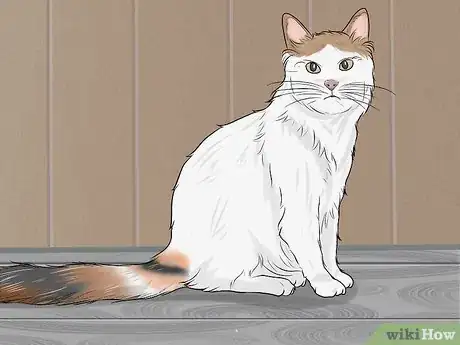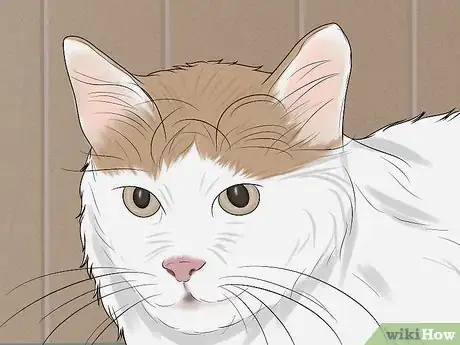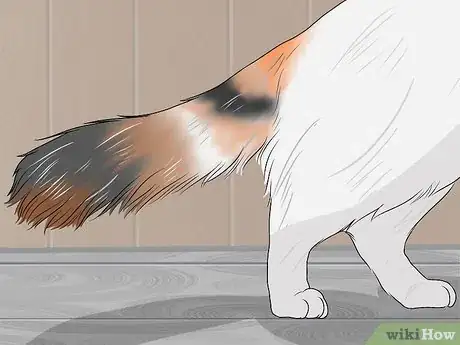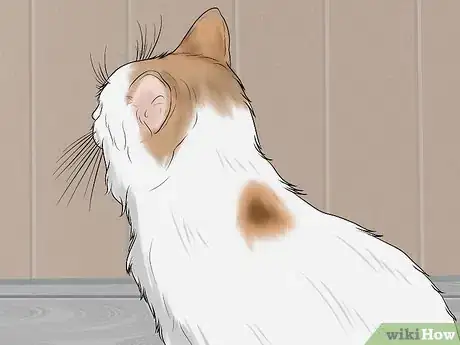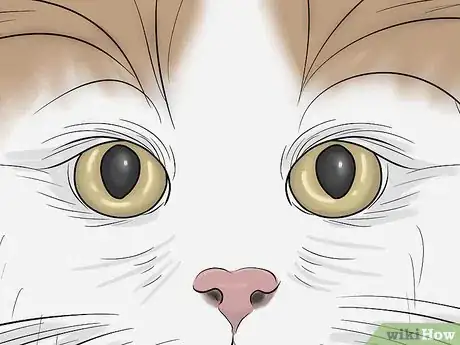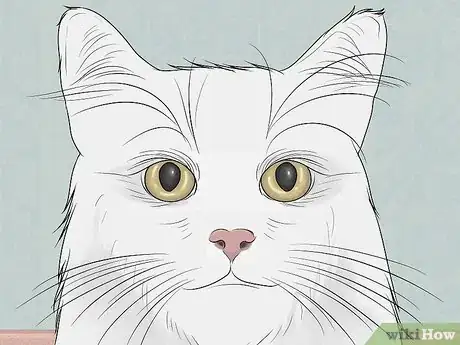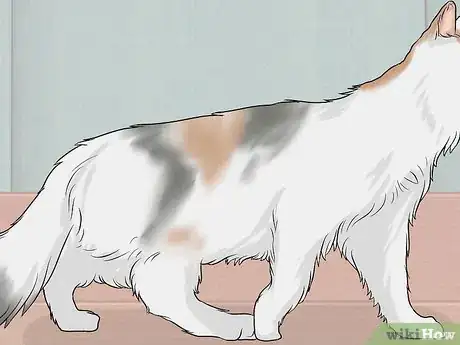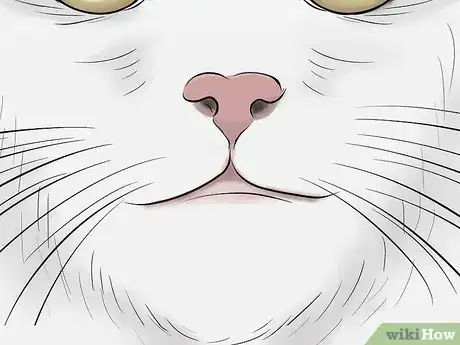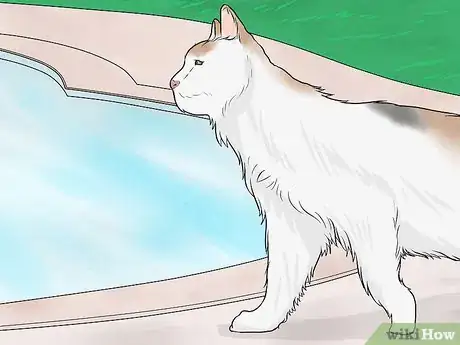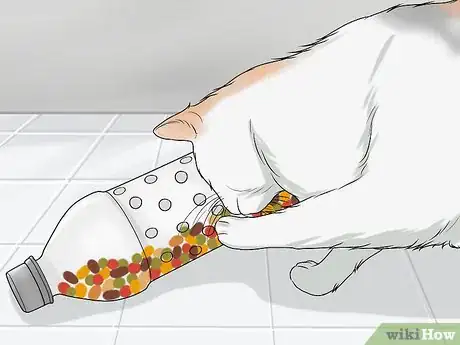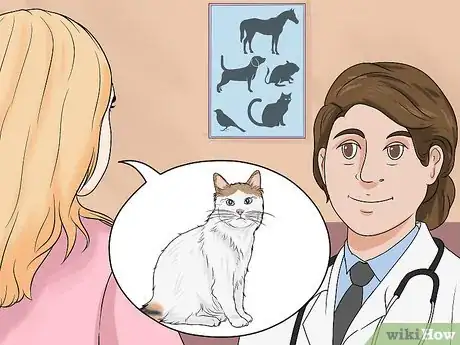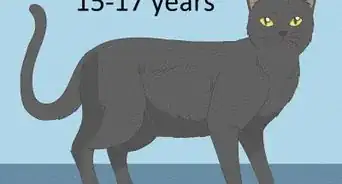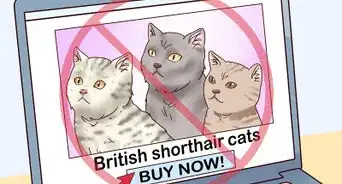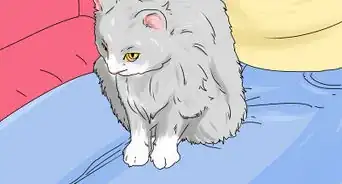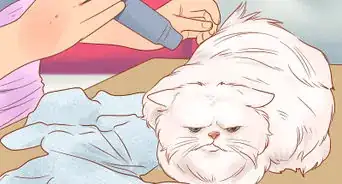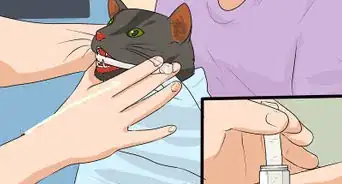This article was co-authored by Lauren Baker, DVM, PhD. Dr. Lauren Baker is a Veterinarian and Assistant Scientist at the University of Wisconsin-Madison. With over 10 years in veterinary medicine, she specializes in the concept of “one health,” which uses insights from veterinary medicine to help human medical research. She holds a Ph.D. in Comparative Biomedical Sciences, a Doctor of Veterinary Medicine, an MS in Comparative Biomedical Sciences, and a Bachelor’s degree in Psychology from the University of Wisconsin-Madison.
There are 7 references cited in this article, which can be found at the bottom of the page.
wikiHow marks an article as reader-approved once it receives enough positive feedback. In this case, 100% of readers who voted found the article helpful, earning it our reader-approved status.
This article has been viewed 100,921 times.
A Turkish Van is a large, muscular cat known for its love of water. This breed has a soft, white coat with a colored tail and colored ears. A Turkish Van has blue or gold eyes, and sometimes will have one of each color. You can also identify a Turkish Van by its facial structure, body type, and head shape. This unique cat is quite intelligent and is usually up for a swim if you have a pool, pond, or lake nearby.
Steps
Examining the Cat’s Coat
-
1Survey the cat’s coat. A Turkish Van has a white coat that is as soft as cashmere. In the summer, the cat’s hair sheds to become a short light coat. During the winter months, the Turkish Van’s soft white coat is thick and long.[1]
-
2Look at the cat’s ears. A Turkish Van has brown, red, gray, or black ears that are generally the same color as its tail. These markings contrast with the cat’s white coat. Sometimes a Turkish Van’s ears will have a striped pattern, while other times these marking will appear in a more solid pattern.[2]Advertisement
-
3Examine the cat’s tail. You can tell whether a cat is a Turkish Van by carefully examining the animal’s tail. A Turkish Van has a full, brush-like tail. The tail will also be colored. For example, a Turkish van might have a brown, red, gray, or black tail that contrasts with its white coat.[3]
-
4Look for the “thumbprint of God.” Many Turkish Vans have a distinctive mark between their shoulder blades that is often referred to as the “thumbprint of God.” Keep in mind that not all Turkish Vans have this small, thumbprint-shaped mark. Without other distinctive, breed-specific characteristics, the presence of the mark alone does not necessarily mean a cat is a Turkish Van.[4]
Looking for Other Physical Traits
-
1Look for blue or gold eyes. A Turkish Van has distinctive eyes. While many Turkish Vans have blue eyes, others have bright gold eyes. It is also common for a Turkish Van to have one blue eye and one gold eye.[5]
-
2Examine the cat’s head. The Turkish Van has a distinctive head shape. If the cat is a Turkish Van, its head will be broad and wedge-shaped. The cat will also have a rounded muzzle.[6]
-
3Consider the cat’s body type. A Turkish Van is a large, muscular cat with broad shoulders and a short neck. Its body and tail are moderately long. A mature Turkish Van weighs between 10 and 20 pounds. The female is smaller than the male, and usually weighs in on the lower end of this range.[7]
-
4Look at the cat’s facial structure. A Turkish Van has a nose that is straight and Asiatic. Its nose is considered long for a semi-longhair cat. The Turkish Van also has distinctive high cheekbones.[8]
Identifying Behavioral Traits
-
1Observe the cat around water. Turkish Vans are known for their love of water. Pay close attention to the cat when it is around water, and take note of whether or not it seems interested by water sources or attempts to submerge itself in them. You should never, however, force any cat to enter a body of water.[9]
-
2Look out for signs of intelligence. Turkish Vans are extremely intelligent. They thrive when presented with challenging tricks, games, and puzzles. Try giving the cat a puzzle game and see how quickly it can solve it!
- Try a simple game. Take a small plastic bottle and cut a couple of small holes in it. Then, place some treats or kibble in the bottle. In order to get the food, the cat will need to learn to roll and move the bottle so that the treats fall out of the holes.
-
3Watch out for climbing. Turkish Vans love to climb. You might find the cat has perched itself high on top of cabinets or large appliances, like the refrigerator. If you do have a Turkish Van, you will want to make sure it has plenty of opportunities for climbing.[10]
-
4Consult an expert. If you think you have a Turkish Van on your hands, but are still unsure, consult an expert that specializes in cat breeds. This can be a breeder of Turkish Vans. You can also talk to your veterinarian for suggestions.
- Be aware that without pedigree papers, it can be difficult to officially determine if you really have a Turkish Van, though you may be reasonably sure.
References
- ↑ http://www.petmd.com/cat/breeds/c_ct_turkish_van
- ↑ http://www.cat-breeds-encyclopedia.com/Turkish-Van-cat.html
- ↑ http://www.vetstreet.com/cats/turkish-van
- ↑ http://www.animalplanet.com/tv-shows/cats-101/videos/turkish-van/
- ↑ http://cattime.com/cat-breeds/turkish-van-cats#/slide/1
- ↑ http://www.vetstreet.com/cats/turkish-van
- ↑ http://www.petmd.com/cat/breeds/c_ct_turkish_van#
- ↑ http://www.petmd.com/cat/breeds/c_ct_turkish_van#
- ↑ http://cattime.com/cat-breeds/turkish-van-cats#/slide/1
About This Article
To identify a Turkish Van, check the cat’s coat, which should be white and soft, like cashmere. Additionally, examine its tail to see if it’s full, colored, and brush-like. You should also look for a wedge-shaped head, a rounded muzzle, high cheekbones, and blue or gold eyes, or one of each. Beyond physical characteristics, observe the cat around water, as Turkish Vans are known for their love of water. For more tips from our Veterinary co-author, like how to identify a Turkish Van by its intelligence, read on!
